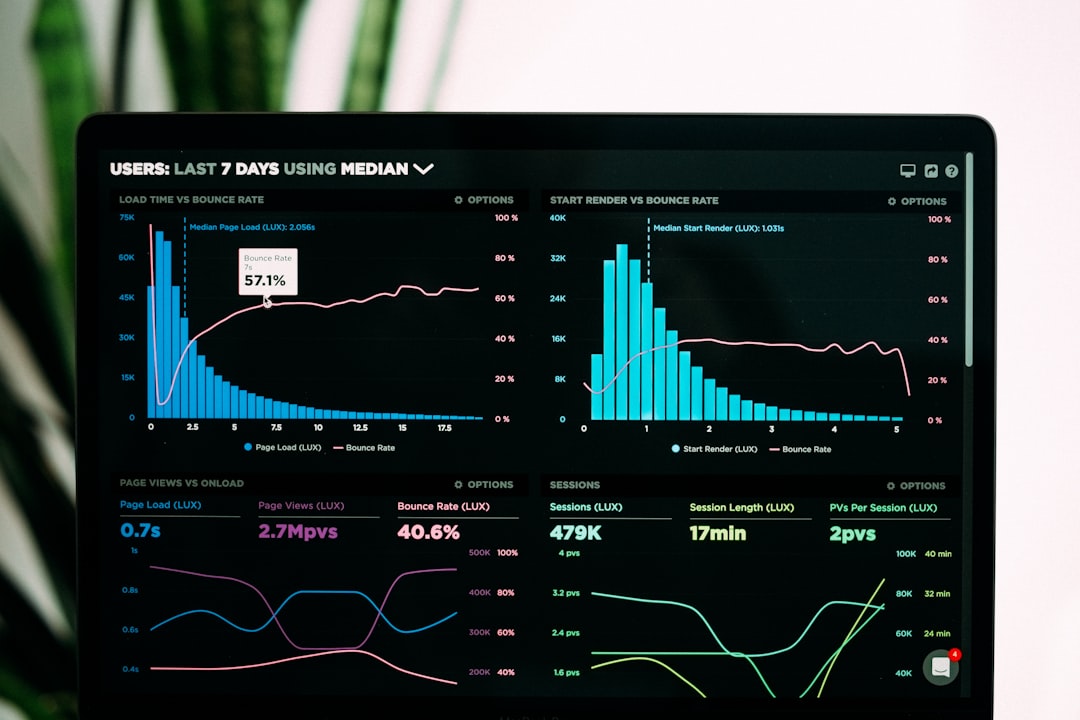Unlock encrypted content
Please enter your SSCE key to initiate on-the-fly decryption.
Decryption key: (Click cancel if you don't have the key)
Copied link to clipboard.
This feature is unavailable for free accounts. Upgrade now and enjoy all Premium benefits.
Go Premium!
This feature is unavailable for free accounts. Upgrade now and enjoy all Premium benefits.
Go Premium!
Please open this page in browser ( Google Chrome or Safari ) to use this feature.
Open In Browser
Spatial Computing: Exploring the Future of Technology
Random related video for this blog.
Copied share link to clipboard.
This cutting-edge technology combines augmented reality (AR), virtual reality (VR), and mixed reality (MR) to create immersive experiences that blur the line between the digital and physical realms. With the ability to overlay digital content onto the real world, spatial computing opens up a world of possibilities across various industries, from gaming and entertainment to education and healthcare.
What is Spatial Computing?
Spatial computing refers to the use of advanced technologies, such as computer vision, depth sensing, and machine learning, to create a seamless integration between the physical and digital worlds. By mapping the physical environment and tracking the user's movements and gestures, spatial computing enables the placement of virtual objects in real-world spaces. This technology allows users to interact with digital content in a natural and intuitive way, using gestures, voice commands, or even eye movements. One of the key components of spatial computing is the use of biometric authentication, which adds an extra layer of security by using unique physical or behavioral characteristics to verify the user's identity. This technology can be applied in various contexts, such as unlocking devices, accessing secure information, or making secure transactions. Biometric authentication methods include fingerprint scanning, facial recognition, iris scanning, and voice recognition.The Potential of Spatial Computing
Spatial computing has the potential to revolutionize numerous industries and transform the way we live, work, and interact with technology. Let's explore some of the key areas where spatial computing is making a significant impact:1. Autonomous Vehicles
Autonomous vehicles are one of the most promising applications of spatial computing. By combining sensors, cameras, and advanced algorithms, autonomous vehicles can navigate and interact with the surrounding environment without human intervention. Spatial computing plays a crucial role in providing real-time data about the vehicle's surroundings, allowing it to make informed decisions and avoid obstacles.This technology has the potential to enhance road safety, reduce traffic congestion, and revolutionize the transportation industry.
2. Futuristic Gadgets
Spatial computing opens up exciting possibilities for the development of futuristic gadgets that can augment our daily lives. Imagine wearing smart glasses that can overlay digital information onto the real world, providing real-time translations, navigation assistance, or even virtual objects. With spatial computing, these gadgets can understand the context and environment, allowing for a more immersive and interactive experience.3. 3D Data Storage
Traditional data storage methods often fall short when it comes to handling the massive amounts of data generated in today's digital age. Spatial computing offers a solution through 3D data storage, where data is stored in three-dimensional structures rather than traditional two-dimensional formats. This approach enables higher storage densities, faster data access, and enhanced data security. With spatial computing, we can unlock the potential for storing and processing vast amounts of data in more efficient and secure ways.4. Radar Systems
Radar systems play a crucial role in various industries, including aviation, defense, and weather forecasting. Spatial computing can enhance radar systems by providing real-time data visualization and analysis. By overlaying radar data onto a three-dimensional representation of the environment, spatial computing enables more accurate and intuitive interpretation of the data. This technology has the potential to improve radar-based applications, such as object detection, tracking, and weather prediction.5. Cloud-based File Editing and Data Storage
Cloud-based file editing and data storage have become essential in today's digital landscape. Spatial computing can enhance these services by providing a more intuitive and immersive user experience. Imagine being able to manipulate files and data in a virtual workspace, using gestures and voice commands. Spatial computing can transform the way we collaborate, edit, and store files, making these processes more efficient and engaging.Conclusion
Spatial computing is poised to revolutionize the way we interact with technology and the physical world. This cutting-edge technology has the potential to transform various industries, from autonomous vehicles and futuristic gadgets to data storage and radar systems. By seamlessly blending the digital and physical realms, spatial computing opens up a world of possibilities for immersive and intuitive experiences. As this technology continues to evolve, we can expect to see new and innovative applications that will shape the future of technology.Frequently Asked Questions (FAQs) Question: How does spatial computing work?
Answer:
Spatial computing combines augmented reality (AR), virtual reality (VR), and mixed reality (MR) to create immersive experiences. By mapping the physical environment and tracking user movements, gestures, and biometric data, spatial computing enables the placement of virtual objects in real-world spaces, allowing for natural and intuitive interactions. Question: What are some potential applications of spatial computing?
Answer:
Spatial computing has the potential to transform various industries, including autonomous vehicles, futuristic gadgets, 3D data storage, radar systems, and cloud-based file editing and data storage. It can enhance road safety, revolutionize daily gadgets, improve data storage efficiency, enhance radar-based applications, and provide more intuitive file editing and storage experiences. Question: How can spatial computing benefit the transportation industry?
Answer:
Spatial computing can benefit the transportation industry by enabling the development of autonomous vehicles. By providing real-time data about the vehicle's surroundings, spatial computing enhances the vehicle's ability to navigate and avoid obstacles, improving road safety and reducing traffic congestion. Question: What are some advantages of 3D data storage?
Answer:
3D data storage offers higher storage densities, faster data access, and enhanced data security compared to traditional two-dimensional storage methods. It allows for the storage and processing of vast amounts of data in a more efficient and secure manner, addressing the challenges posed by the increasing amounts of data generated in today's digital age. Question: How does spatial computing enhance cloud-based file editing and data storage?
Answer:
Spatial computing enhances cloud-based file editing and data storage by providing a more intuitive and immersive user experience. Users can manipulate files and data in a virtual workspace using gestures and voice commands, making the editing and storage processes more efficient and engaging.
By Amelia Isabella
Email: [email protected]
Related
Secure File Sharing with Customizable Storage Plans and Efficient Transfer...
May 30, 2023
Read More
FileLu Cloud Storage: Secure, Advanced, and Tailored for Creative Professionals.
May 30, 2023
Read More
Popular
The Future of Technology: Exploring Biohacking, Space Tourism, and Digital...
November 23, 2025
Read More
Exploring the Benefits of Cloud Storage and Innovative Technologies in...
November 26, 2025
Read More
The Future of Digital Transformation: Exploring Smart Homes, Efficient File...
November 30, 2025
Read More
Latest
The Future of Digital Transformation: Exploring Smart Homes, Efficient File...
November 30, 2025
Read More
Exploring the Benefits of Cloud Storage and Innovative Technologies in...
November 26, 2025
Read More
The Future of Technology: Exploring Biohacking, Space Tourism, and Digital...
November 23, 2025
Read More
The Future of File Sharing: Streamlined Workflows for Photographers and...
November 19, 2025
Read More
Exploring the Intersection of Technology: From Cybersecurity to Augmented Reality...
November 16, 2025
Read More
The Future of File Management: Embracing Edge Computing and Efficient...
November 12, 2025
Read More
The Future of File Sharing: Exploring User-Friendly Solutions and Data...
November 5, 2025
Read More
The Future of Cloud Storage: How FileLu Empowers Creative Professionals...
November 2, 2025
Read More
The Future of Autonomous Technologies: Innovations in Robotics, File Sharing,...
October 29, 2025
Read More
Emerging Technologies Revolutionizing File Management: From Li-Fi to Robust Collaboration...
October 26, 2025
Read More
Emerging Technologies: Exploring the Impact of File Access Auditing, Genetic...
October 19, 2025
Read More
The Future of Data Storage: Exploring Advanced Encryption, Mobile Integration,...
October 5, 2025
Read More
Exploring the Future of Data Management: Security, Efficiency, and Cognitive...
September 28, 2025
Read More
Revolutionizing Data Management: Innovations in Storage, Security, and Sustainable Technology.
September 24, 2025
Read More



















